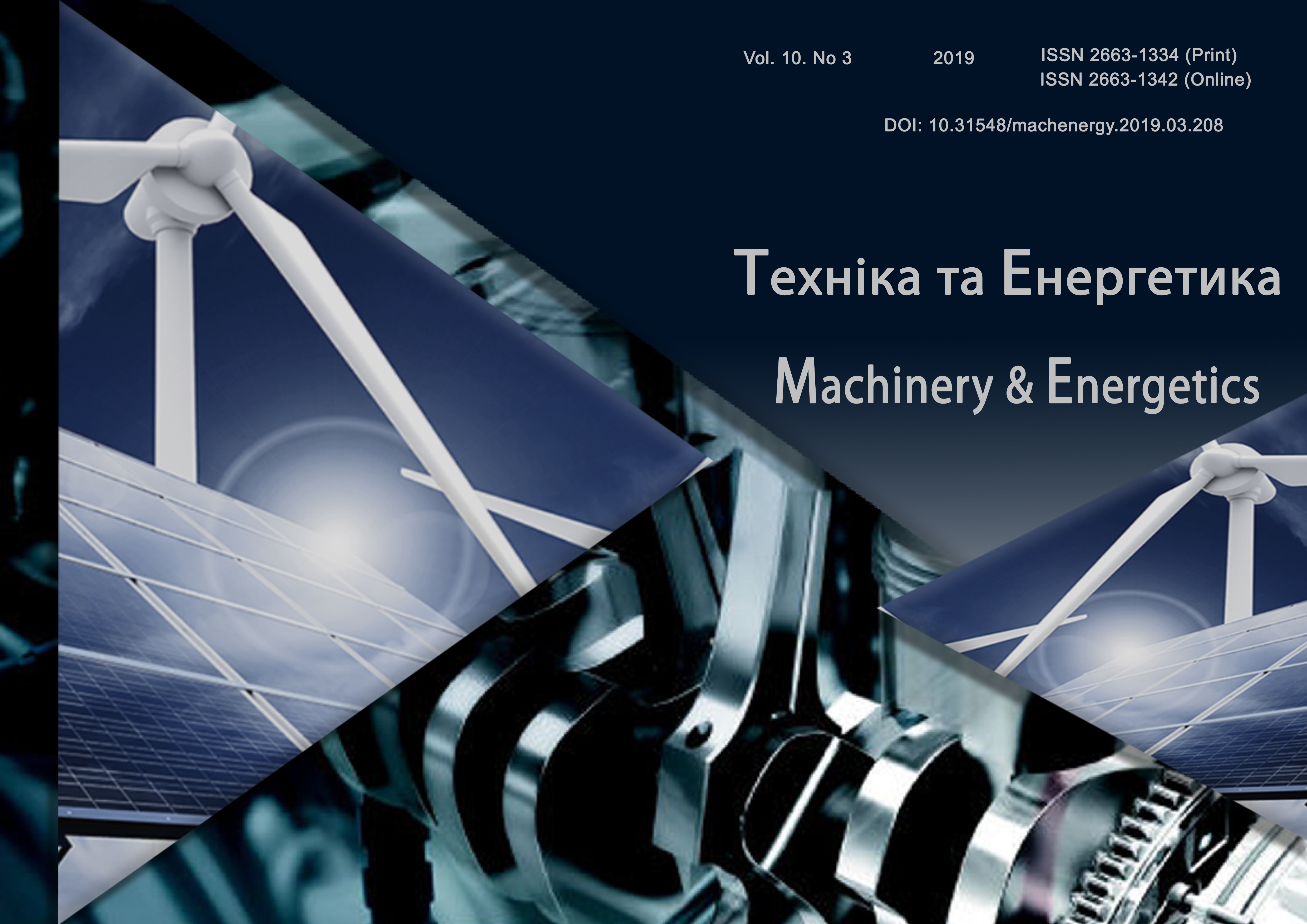Transportation of particle with horizontal auger, limited coaxial fixed cylinder
DOI:
https://doi.org/10.31548/machenergy2019.03.015Keywords:
particle, relative motion, horizontal screw, angular velocity of rotation, cylindrical casing, differential equations, kinematic parameters.Abstract
The article deals with the transportation of process material with a horizontal auger on the example of a single particle. The auger is the surface of a screw conoid or straight closed helicoid. The auger rotates about its axis inside a fixed coaxial cylindrical casing. The particle simultaneously contacts the movable and fixed sur-faces. The common line of these surfaces, along which the particle is forced to move during the rotation of the auger, is a screw line - the outer edge of the auger. The article assumes that the particle is on this line all the time. The screw line rotates with the auger, and the particle slides simultaneously on it and on the cylindrical casing, i.e. makes a complex movement. The sum of the relative motion of the particle (sliding along the screw line) and the rotational motion of the screw line give an absolute trajectory.
The parametric equations of the absolute trajectory in the function of time in which the law of slip of a particle along a screw line is unknown are provides. Sequential differentiation found the speed and acceleration of absolute motion. The direction of the applied forces, to which the weight of the particle, the reaction of the surfaces of the auger and the cylindrical casing, the forces of friction of the particle when sliding on these surfaces, are found. A system of differential equations is developed, which is solved by numerous methods. It is shown that the absolute trajectory of movement of a particle after stabilization of motion is a rectilinear creature of the cylinder, which is located higher than its lowest one. The influence of friction coefficients and design parameters of the limiting cylinder and auger on the absolute trajectory of particle displacement is investigated. Absolute trajectories of particle motion in function of time are constructed.
After the transition period, the motion of the particle with constant kinematic parameters comes to stabilize. In this case, analytical expressions were found to determine these parameters. It is shown that in the case of a perfectly smooth surface of the cylindrical casing, the particle will move along its lowest rectilinear creature. Absolute trajectories of the particle for different coefficients of fric-tion along the surface of the cylindrical casing the casing are constructed. It is shown that as the coefficient of fric-tion increases, the height of this trajectory also increases.
References
Pylypaka S.F., Babka V.M., Grischenko I.Yu., Kresan T.A. (2018). Mathematical model of moving particles with a vertical auger in stationary mode. Machinery & Energetics. Vol. 9, No. 4, 271, 50-58.
Vasilenko P.M. (1960). The theory of particle motion on the rough surfaces of agricultural machines. Kiev: UASHN, 283.
Zaika P.M. (1992). Selected tasks of agricultural mechanics. Kiev: USHA Publishing House, 507.
Sysoev N.I. (1949). Theoretical foundations and the calculation of sorting "Snake". Agricultural machine. No. 8, 5-8.
Voituk D.G., Pylypaka S.F. (2003). Finding the trajectory of motion of a material point along the gravitational unfolding surface on the example of a unfolding helicoid. Mechanization and energy of agriculture. IV MOTOR-2003 International Scientific and Technical Conference. Kiev: NAU. Volume 6, 113-126.
Voituk DG, Linnik MK, Pylypaka S.F. (2006). Investigation of the movement of a material particle on the surface of an oblique helicoid under the action of selfweight. APK technique. № 12, 17 - 22.
Pylypaka S.F., Clendiy M.B., Kresan T.A. (2018). The movement of the particle on a screw conoid bounded by a vertical rough cylinder. Bulletin of the Kherson National Technical University. No. 4 (67), 20-30.
Downloads
Published
Issue
Section
License
Relationship between right holders and users shall be governed by the terms of the license Creative Commons Attribution – non-commercial – Distribution On Same Conditions 4.0 international (CC BY-NC-SA 4.0):https://creativecommons.org/licenses/by-nc-sa/4.0/deed.uk
Authors who publish with this journal agree to the following terms:
- Authors retain copyright and grant the journal right of first publication with the work simultaneously licensed under a Creative Commons Attribution License that allows others to share the work with an acknowledgement of the work's authorship and initial publication in this journal.
- Authors are able to enter into separate, additional contractual arrangements for the non-exclusive distribution of the journal's published version of the work (e.g., post it to an institutional repository or publish it in a book), with an acknowledgement of its initial publication in this journal.
- Authors are permitted and encouraged to post their work online (e.g., in institutional repositories or on their website) prior to and during the submission process, as it can lead to productive exchanges, as well as earlier and greater citation of published work (See The Effect of Open Access).

